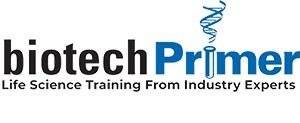The Evolution of SMA Care

The Spinal Muscular Atrophy (SMA) treatment market is set to double within a decade, with projections indicating a growth from $4.3 billion in 2022 to $8.4 billion by 2032 at a CAGR of 6.8%. Despite the limited treatment options available, recent biological and technological advancements have sparked new hope, opening up novel opportunities for treatment and care.
Why It Matters
SMA significantly impacts around 1 in 10,000 newborns, serving as a main genetic cause of infant mortality and causing a wide range of disabilities in teens and adults. The financial burden on SMA patients is substantial, underscoring the need for innovative treatments and enhanced care strategies to improve life quality and reduce costs.
State of Play
The FDA has approved three groundbreaking therapeutic options for SMA.
- Zolgensma (Onasemnogene abeparvovec-xioi), developed by Novartis, received a historical FDA approval in 2019 as the first gene therapy for SMA. Hailed as a near-cure for patients under two years old, Zolgensma has been given to more than 3,000 children globally, with sales of $1.4 billion representing a remarkable 91% of gene therapy sales worldwide.
- Spinraza (Nusinersen), developed by Ionis Pharmaceuticals, was the first antisense oligonucleotide (ASO) to receive regulatory approval for SMA in 2016. In 2022, Spinraza was out-licensed to Biogen for an upfront payment of $60 million.
- Genentech’s Evrysdi (risdiplam), a small molecule drug targeting RNA, was approved by the FDA in 2020.
Innovation at the Fore
Recent breakthroughs in therapeutic approaches and diagnostic technologies are poised to transform the SMA landscape.
- Data from a Phase IV open-label study in 2023 has shown clinical efficacy for dual-therapy with Spinraza and Zolgensma.
- Small molecule Apitegromab (SRK-015) by Scholar Rock has shown significant clinical promise and received Fast Track Designation from the FDA for SMA Types 2 and 3.
- Remarkable progress in cost-effective genetic screening could enable precise and early identification of SMA carriers, a crucial development given that nearly 1 in 50 Americans carry the mutated gene.
Bionic Breakthroughs
Technological advancements are playing a pivotal role in enhancing quality of life for SMA patients.
- After securing $48M in funding, Kinova is poised for global expansion and further development of its robotic solutions portfolio. Kinova produces the Jaco Assistive Robotic arm that can be transformative for SMA patients.
- Clinical trial data have shown that the ATLAS 2030, a robotic exoskeleton from Marsi-Bionics and the Spanish National Research Council, leads to significant improvements in joint strength and mobility for children with SMA.
- Recent small-scale studies exploring the effectiveness of spinal cord stimulation and electrotherapy in treating SMA have demonstrated potential clinical benefits.
The Bottom Line
The SMA treatment market is poised for substantial growth driven by FDA-approved therapies, biological and technological innovations, and the development of diagnostic and assistive technologies. These advancements promise to significantly improve the quality of life for SMA patients, offering new hope through novel treatments, early detection methods, and enhanced care.
Position Yourself For Opportunity
Register for our Gene Therapy Primer short course to expand your knowledge and better position yourself for future opportunities. Gene Therapy Primer presents the scientific principles and regulatory intricacies of manipulating DNA to cure rare disease. References to SMA are found throughout the course. Grab your seat today!

Biotech Primer is your go-to source for interactive training across the biotechnology, pharmaceutical, molecular diagnostics, and medical device sectors. Explore a range of in-depth biotech courses designed to deepen your understanding of key principles and applications in the field.
Learn More










